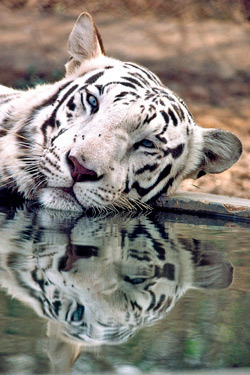World Wildlife Day, marked on 3 March 2015, is an opportunity to celebrate the many beautiful and varied forms of wild fauna and flora and to raise awareness of the multitude of benefits that conservation provides to people. At the same time, the Day reminds us of the urgent need to step up the fight against wildlife crime, which has wide-ranging economic, environmental and social impacts.*
Globally wildlife crime is conservatively estimated to be worth around $8 to $10 billion annually.
Wildlife has an intrinsic value and contributes to the ecological, genetic, social, economic, scientific, educational, cultural, recreational and aesthetic aspects of sustainable development and human well-being.
For these reasons, all member States, the United Nations system and other international organizations, as well as civil society, non-governmental organizations and individuals, are invited to observe and to get involved in this global celebration of wildlife.
Local communities can play a positive role in helping to curb illegal wildlife trade.
The secretariat of the Convention on International Trade in Endangered Species of Wild Fauna and Flora (CITES), in collaboration with other relevant United Nations organizations, facilitates the implementation of World Wildlife Day.
With 180 Member States, CITES remains one of the world’s most powerful tools for biodiversity conservation through the regulation of trade in wild fauna and flora.
‘Planet’s biodiversity threatened by wildlife crime’
In a statement issued on World Wildlife Day, the Executive Director of the UN Office on Drugs and Crime (UNODC), Yury Fedotov, said our “stewardship of this planet’s biodiversity” is threatened if there are no attempts made to reduce the demand for animal parts, while disrupting supply by seizing the assets of the criminal networks who commit this crime.
On the issue of curbing demand, Fedotov emphasized the importance of breaking with the past traditions that help drive these crimes.
“Young people are the next generation of potential purchasers of illegal wildlife commodities. Working globally, we can deliver science-based information to young people and help dispel the misinformation,” he said.
Globally wildlife crime is conservatively estimated to be worth around $8 to $10 billion annually
Fedotov identified sustainable development in countries supplying wildlife commodities as another vital issue that calls for additional action.
“Wildlife crime also has a powerful development dimension. Sustainable livelihoods is an area where local communities building local enterprises can be empowered to live in harmony with their surroundings.”
Globally wildlife crime is conservatively estimated to be worth around $8 to $10 billion annually. UNODC’s addresses this transnational threat by helping states align their national laws to the UN Convention Against Transnational Organized Crime and providing assistance in the areas of anti-money laundering, strengthening law enforcement, and anti-corruption activities under the UN Convention against Corruption, among others.
World Wildlife Day was adopted on 20 December 2013, at the 68th Session of the UN General Assembly in New York. The day was chosen because the Convention on International Trade in Endangered Species of Wild Fauna and Flora was adopted on 3 March 1973.
Background
On 20 December 2013, the Sixty-eighth session of the United Nations General Assembly decided to proclaim 3 March as World Wildlife Day to celebrate and raise awareness of the world’s wild fauna and flora.
The date is the day of the adoption of the Convention on International Trade in Endangered Species of Wild Fauna and Flora (CITES) in 1973, which plays an important role in ensuring that international trade does not threaten the species’ survival. **Find full information on: World Wildlife Day
Read also:
World Marches to Demand an End to Illegal Trade in Wildlife
Celebrating the Majesty of One of the Most Threatened Animals on World Elephant Day
Massive Smuggling of Elephant Ivory, Rhino Horn and Great Apes
2015 Human Wrongs Watch












